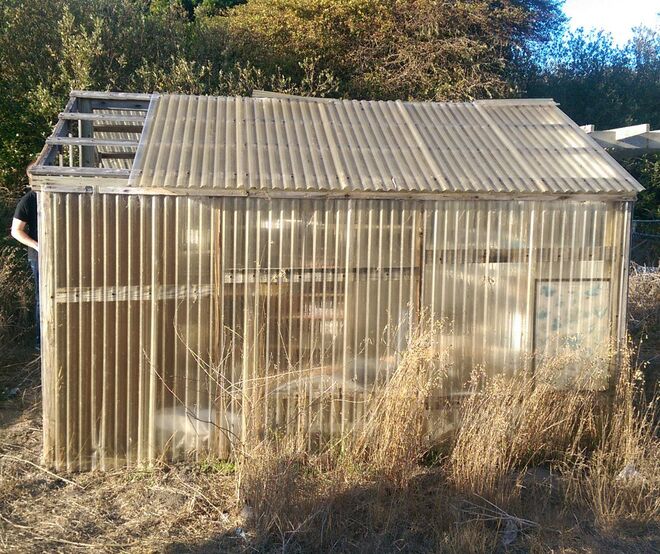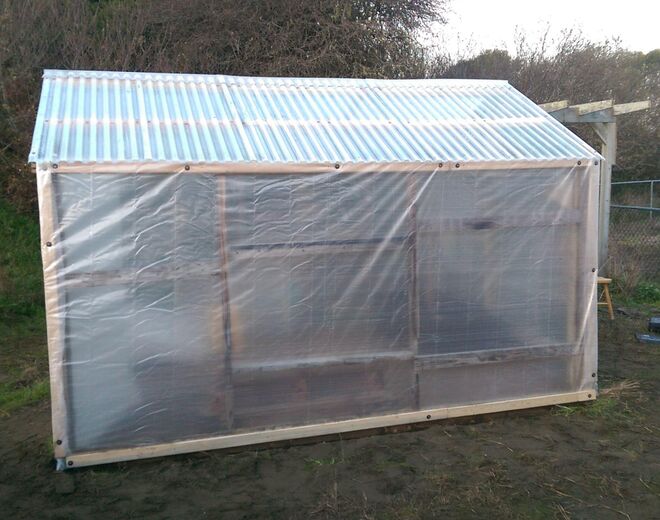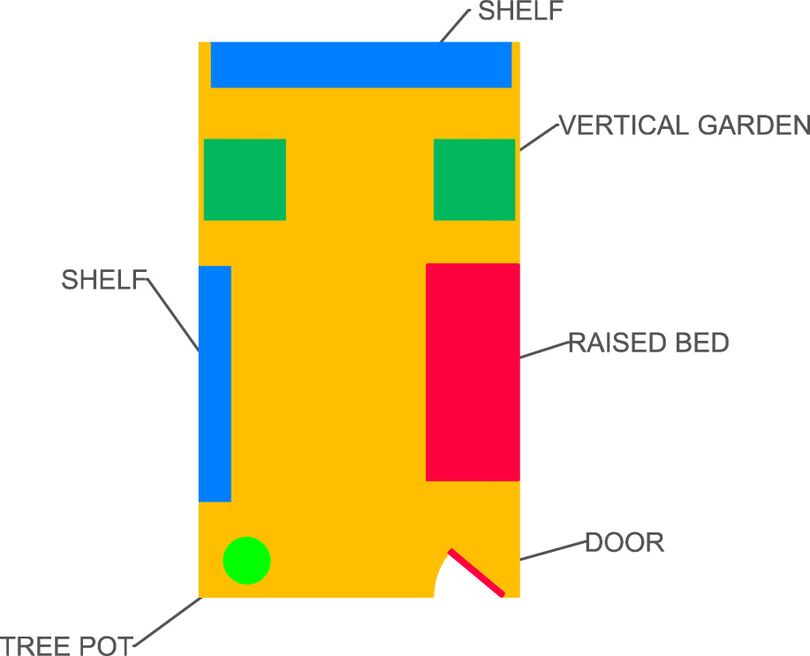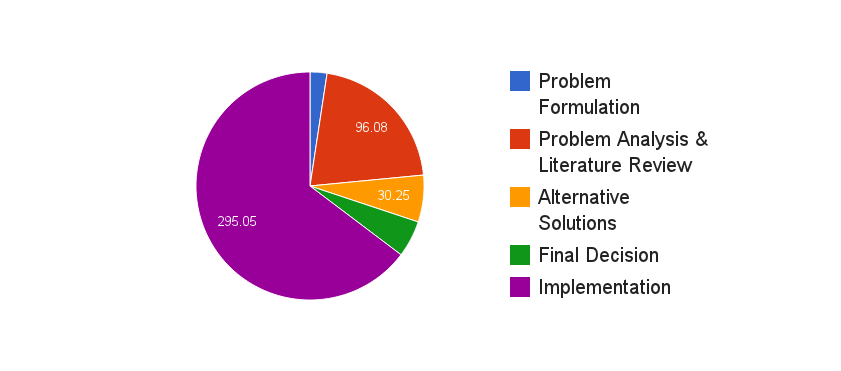
Abstract
The purpose of this project is to renovate the greenhouse located at the Redwood Coast Montessori School (RCMS) and the Manila Community Center, located in Manila, CA.
Background
The montessori method is one that truly embodies the ethos of learning by doing. Redwood Coast Montessori places a lot of value in providing children with an environment that encourages them to follow their passions and progress at their own pace. For some, these interests may involve food, plants, and/or gardening. The greenhouse at RCMS will provide a great opportunity for children to learn about all of these things in a hands-on manner.
Objectives and Criteria
The objective of the Haus of Greenery project is to transform a deteriorated greenhouse into an engaging learning environment that is suitable for use by children.
Criteria
| Table-1: Criteria and Description | |||||
|---|---|---|---|---|---|
| Criteria | Weight | Description | |||
| Educational Value | 10 | Students will receive basic principles of plant growth. | |||
| Safety | 10 | Both kids and adults should be safe inside the structure. | |||
| Use of recycled Materials | 7 | Use upcycled materials. | |||
| Plant Space | 6 | The greenhouse should hold at least 25 seedlings and 5 mature plants. | |||
| Effectiveness of Growing | 6 | Temperature should range from 60-78 degrees Fahrenheit. | |||
| Capacity | 4 | Structure needs to hold between 2-4 people | |||
| Level of Maintenance | 4 | Maintenance should be simple enough for a child to perform. | |||


Final Design
The name for the final design of the greenhouse is the “house of greenery”. The house of greenery meets the criteria and specific needs for the Redwood Coast Montessori greenhouse. The design includes a raised bed on the east side of the greenhouse to accommodate larger plants. Directly above that is a high shelf that is used by teachers and other faculty members. To provide educational value for the students at Redwood Coast Montessori, the greenhouse gremlins implemented two vertical gardens and a side shelf to show different growing methods. The tool rack stands near the entrance of the greenhouse for small shovels and other hand tools for gardening.
The Floor is decomposed granite to allow drainage and to give the greenhouse a natural appearance. The inside also includes a tree potter at the corner of the house for aesthetic purposes.
The south wall is made of woven polyethylene. The remaining three walls are comprised of a combination of single-wall polycarbonate and glass windows. The roof is also made of single-wall polycarbonate.

Costs
The table below shows the materials purchased for renovating the greenhouse.
| Item | Quantity | Retail Cost | Our Cost |
|---|---|---|---|
| Primer | 1 Gallon | $23.99 | $0.00 |
| Woven Poly (12 ft x 22 ft) | 1 | $114.32 | $0.00 |
| Polycarbonate Panels (12 ft x 2 ft) | 1 | $227.94 | $37.99 |
| Composite Bender Board (20 ft each) | 2 | $57.98 | $57.98 |
| Twine (40 ft) | 1 | $5.99 | $5.99 |
| 2" wood screws | 1 Box | $5.99 | $5.99 |
| 2" Roofer's Screws | 36 | $9.27 | $9.27 |
| Wood (2 in x 4 in x 12 ft) | 5 | $28.80 | $28.80 |
| Wood (1 in x 3 in x 8 ft) | 8 | $39.92 | $39.92 |
| Silicone Caulking (10.1 oz Tube) | 1 | $2.28 | $2.28 |
| Paint Brush | 1 | $2.99 | $2.99 |
| Paint Roller | 1 | $3.99 | $3.99 |
| Paint Tray | 1 | $1.99 | $1.99 |
| Polycarbonate Ridge Flashing (4 ft) | 3 | $75.87 | $75.87 |
| Thermometer/Hygrometer | 1 | $15.95 | $15.95 |
| Stainless Steel Washers | 30 | $6.00 | $6.00 |
| Decomposed Granite | 2/3 Scoop | $50.17 | $50.17 |
| 2 ft x 2 ft plant trays | 4 | $120.00 | $0.00 |
The pie chart below shows the amount of hours spent on each phase of the engineering design process.

How to Maintain
Maintenance
Having a clean growing environment is essential to the health of the plants. Regular cleaning and inspections of the greenhouse are necessary to keep it in top working condition. (Nair 2010).
Weekly Maintenance
Tasks such as removing dead leaves, checking for pests, pulling weeds, and cleaning the workspace, should be completed weekly. It is important to have a workspace clean and clear of possible pests and diseases that could be detrimental to the plants life. Having a clean workspace also consists of having an organized workspace. In addition, it is very important to wash the inside and outside of the greenhouse with disinfectant before new crops are planted (Nair 2010). There are several different types of washes made specifically for cleaning greenhouses that are available for purchase online. These washes remove any type of build-up, mold, or disease from the interior and exterior of the greenhouse (Nair 2010). These washes clear up the panels, allowing for more sunlight to enter into the greenhouse; disinfection allows for future crops to thrive without getting possible contamination from a previous crops disease. Ideally, all plants should be removed from the greenhouse so contamination from the dirty wash water does not occur. The cleaning should be done at the end of each growing season, in between crop rotations (Nair 2010). However, it is crucial to be very precise with the wash liquid and not contaminate the plants if that is not possible.
Daily Maintenance
Having each and every system within the greenhouse running at optimal levels will ensure maximum growth of the plants. Daily checks of the irrigation and ventilation systems are necessary to maintain optimal growing conditions (Piñon 2005). Inspecting the plants and growing boxes for traces of microorganisms in the plants themselves is another necessary inspection (Nair 2010). If any are found, it is necessary to take the appropriate measures to get rid of the microorganisms.
Discussion
After hundreds of hours of work on the project, the greenhouse gremlins believe that the greenhouse will provide educational value and fun for the kids at Redwood Coast Montessori.
Next steps
The next steps for the greenhouse will involve the students and teachers growing their desired plants inside the structure. Plans for the plants grown inside the greenhouse might include selling them in the local farmer’s market or planting them in the school’s garden.
References
Nair, A., and Ngouajio, M. (2010). “Keep the Greenhouse Clean.” American Vegetable Grower, 58.4, 31-32.
Authors
The Greenhouse Gremlins: